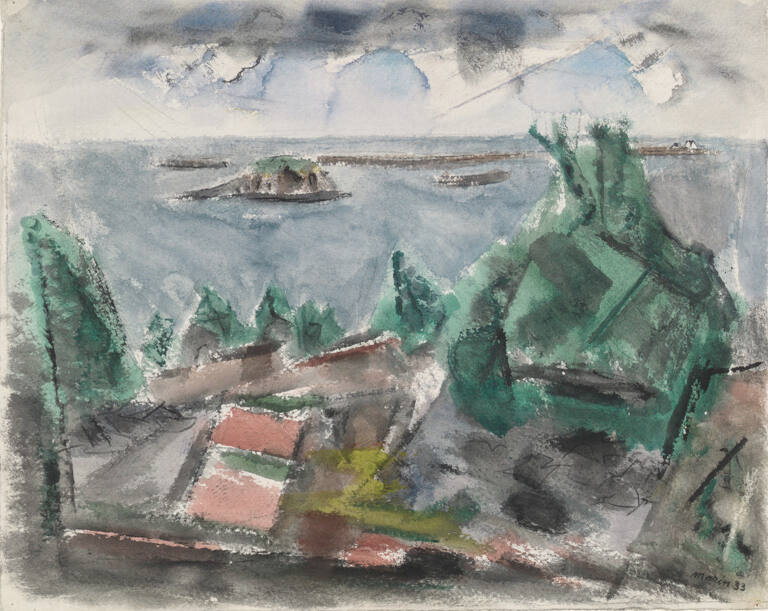
Object Details
Artist
John Marin
Date
1933
Medium
Watercolor
Dimensions
15 1/2 x 19 3/8 inches (39.4 x 49.2 cm)
Credit Line
Dr. and Mrs. Milton Lurie Kramer Collection; Bequest of Helen Kroll Kramer
Object
Number
77.062.017
Trained as an architect, John Marin turned to a career in art in his late twenties, first attending (…)
Trained as an architect, John Marin turned to a career in art in his late twenties, first attending the Pennsylvania Academy of Fine Arts and studying with Thomas Anshutz, then at the Art Students League in New York. In 1905 he left for Europe, coming under the spell of Whistler and the Japanese. Through Edward Steichen he met Alfred Stieglitz, and in 1910 he had his first one-man show at Stieglitz’s New York gallery, 291. The following year Marin returned to the States for good and began to apply his unique brand of Cubism to scenes of pulsating city life that surrounded him. His images capture the movement, excitement and flux of his environment, but, unlike his European contemporaries, he also included atmospheric effects and strong, overt emotions. In 1914 Marin made his first visit to Maine. Slowly he made his way up the coast, eventually settling at Cape Split in 1933. His goal in depicting the Maine coast in its wildly varying moods was to paint Òafter nature’s exampleÓ in a structural and sequential manner, not unlike the music of Bach. Watercolors such as Off Cape Split have both the delicacy and the power of a Chinese brush painting, combining the purity of the paper with a range of colors. Marin recognized and promoted the symbiotic relationship between the ink and the paper, allowing both a breathing space. As a result, his watercolors are airy and spacious, and capable of great subtlety and nuance. (From “A Handbook of the Collection: Herbert F. Johnson Museum of Art,” 1998)












